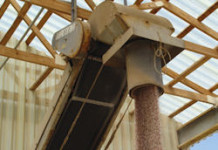PACE Annual Report 2007

1. Biofuels
Now, however, many PACE members say the boom times are over for biofuels. Due to increased costs for raw materials and feedstock, many of the nation’s ethanol plants are seeing their profits erode significantly. This has already caused a few manufacturers to put their new ethanol plant construction plans on hold until the situation stabilizes somewhat.
As a result of these moves, many council members believe corn acres will inevitably decline in 2008, with more acreage moving over to other high cash crops such as soybeans and wheat instead. Indeed, with carryover stocks for these crops at lower-than-historic levels, crop prices have increased significantly (with soybeans topping $10 per bushel in some cases).
Still, retailers can expect government support for alternative fuel efforts in agriculture to continue for years to come. While corn might be the short-term solution, some council members believe retailers need to keep an eye on the development of other “high energy” crops such as elephant grass and switchgrass (or cellulsic forms). Although these crops take years of capital investment before they can be harvested, they produce significantly more ethanol when processed than corn.
As one PACE representative put it: “Corn is sexy today because of ethanol, but growers will ultimately grow what makes the most money.”
2. Fertilizer
Also, representatives say that “green” efforts regarding fertilizer are increasing in frequency. Already, environmental concerns are taking more of the center stage in the nation’s capital. As a result, Council members predict all fertilizer types (and as a consequence, the ag retailers that carry them) could be in the line of political fire.
Greenhouse gas legislation already in the works is expected to impact natural gas prices, driving them even higher than today’s record levels. There is also the possibility that the industry could find itself being taxed on ammonia use and urea application.
3. Crop Protection
Weed resistance — a major problem in some regions in the past few years — continues to create challenges. Retailers working with the major crop protection product manufacturers have done a good job on this issue, but more continuing education and training is needed.
4. Seed/Biotech
Retailers, to be true trusted advisor to the grower, must be highly knowledgable about how these traits as they complement locally successful varieties/hybrids, as well as how they fit into a total cropping plan. As one council member said: “Seed is still an emotional decision for growers, so seed variety is a key. Each seed type has its own distinct personality as far as the customer is concerned.”
5. Equipment
With crop prices as well as input prices at all-time highs, many growers are expected to turn to precision agriculture practices to squeeze more yield and dollars out of their production investments. This should open the door for broader and deeper precision adoption in 2008.






